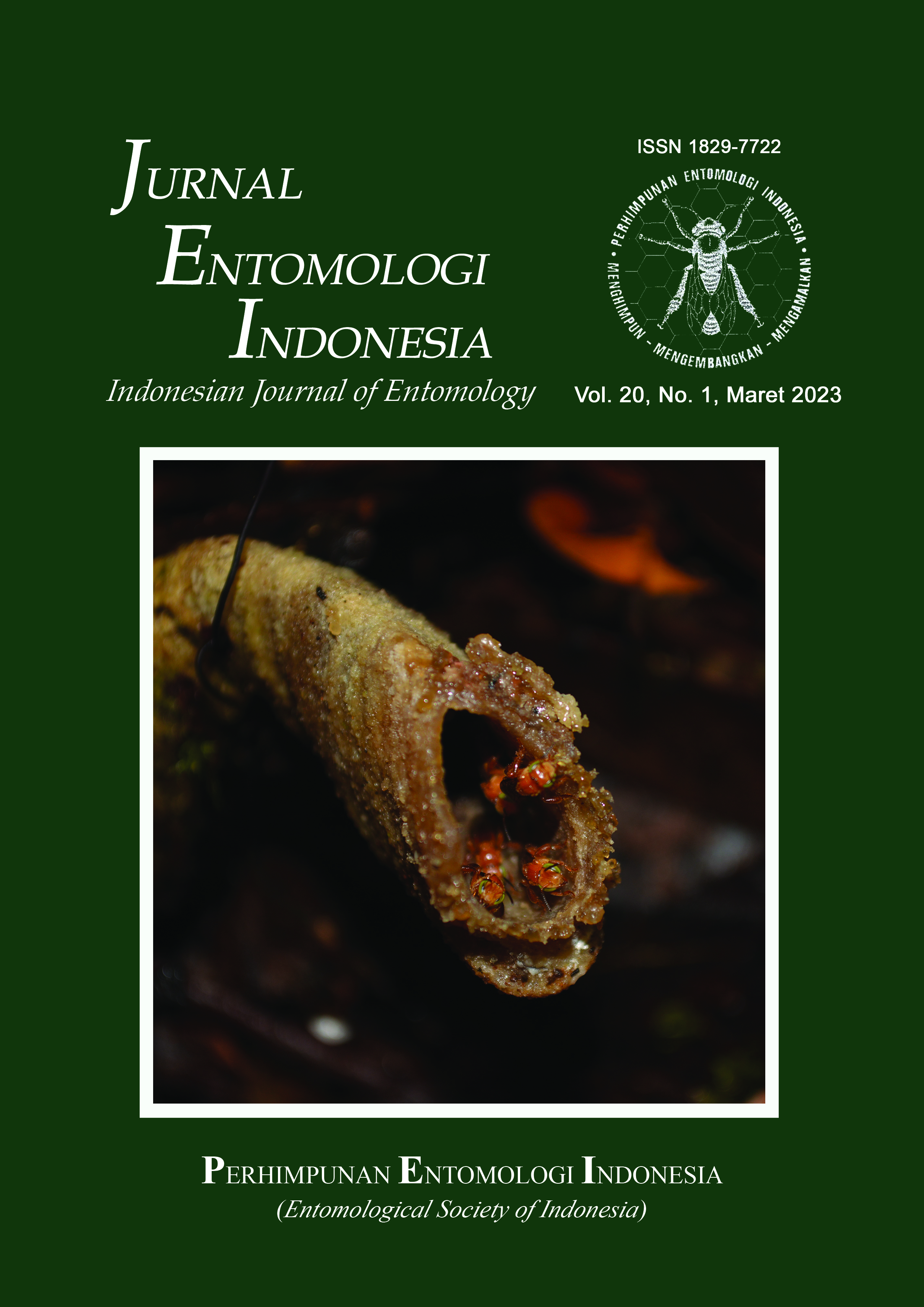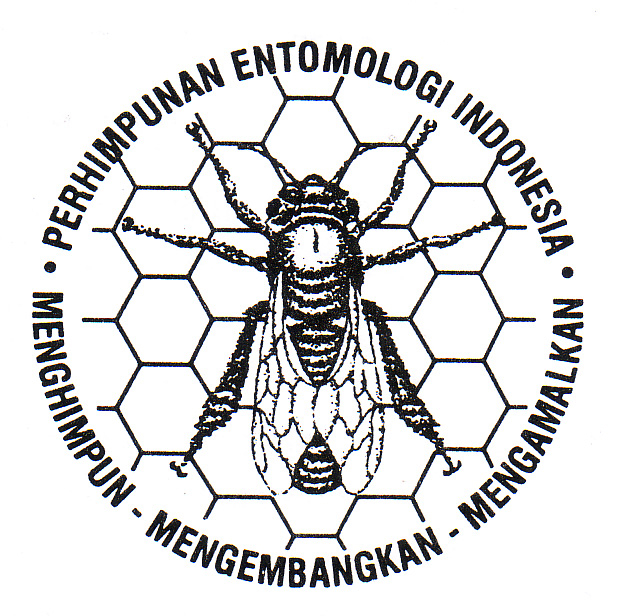Keanekaragaman kupu-kupu (Lepidoptera: Papilionoidea) di Kawasan Pusat Pendidikan Konservasi Alam Bodogol, Taman Nasional Gunung Gede Pangrango, Jawa Barat
Diversity of butterflies (Lepidoptera: Papilionoidae) in the Bodogol Nature Conservation Education Center Area, Gunung Gede Pangrango National Park, West Java
DOI:
https://doi.org/10.5994/jei.20.1.10Keywords:
conservation, forests, species richnessAbstract
Butterflies are a group of insects with high species diversity and are closely related to environmental factors that affect their presence and abundance in a habitat. This study aimed to analyze the diversity and abundance of butterfly populations in PPKA Bodogol, Sukabumi, West Java. Observation of butterflies was carried out using a 700 m long transect method using a camera and sweeping nets along the existing paths in two locations, namely heterogeneous forest and homogeneous forest. Butterfly observations were carried out from 08.00–12.00 in the morning. Based on the research results, 78 species (261 individuals) were found in heterogeneous forests, and 39 species (158 individuals) in homogeneous forests, which belong to 5 families, namely Lycaenidae, Nymphalidae, Papilionidae, Pieridae, and Rionidae. The Nymphalidae is a family that has the highest number of species and individuals compared to other families. The butterfly diversity index in heterogeneous forests was the highest, whereas in homogeneous forests was moderate. The similarity value of butterfly composition is <50%, which means that the composition of butterflies found in the two habitats is not the same. The diversity index of butterflies in heterogeneous forests was higher than in homogeneous forests. There was no significant difference from the Hutchinson test. Species evenness index values in the two habitats showed almost the same value, 0.9 in heterogeneous forests and 0.8 in homogeneous forest. The existence, diversity, and abundance of butterflies in a habitat are closely related to the type of habitat and the abiotic and biotic elements present in it.
Downloads
Downloads
Published
How to Cite
Issue
Section
License
Copyright (c) 2023 Hasni Ruslan, Abda'u Satiyo, Yenisbar

This work is licensed under a Creative Commons Attribution 4.0 International License.
Authors who publish with this journal agree to the following terms:
- Authors retain copyright and grant the journal right of first publication with the work simultaneously licensed under a Creative Commons Attribution 4.0 International License that allows others to share the work with an acknowledgement of the work's authorship and initial publication in this journal.
- Authors are able to enter into separate, additional contractual arrangements for the non-exclusive distribution of the journal's published version of the work (e.g., post it to an institutional repository or publish it in a book), with an acknowledgement of its initial publication in this journal.
- Authors are permitted and encouraged to post their work online (e.g., in institutional repositories or on their website) prior to and during the submission process, as it can lead to productive exchanges, as well as earlier and greater citation of published work (See The Effect of Open Access).









